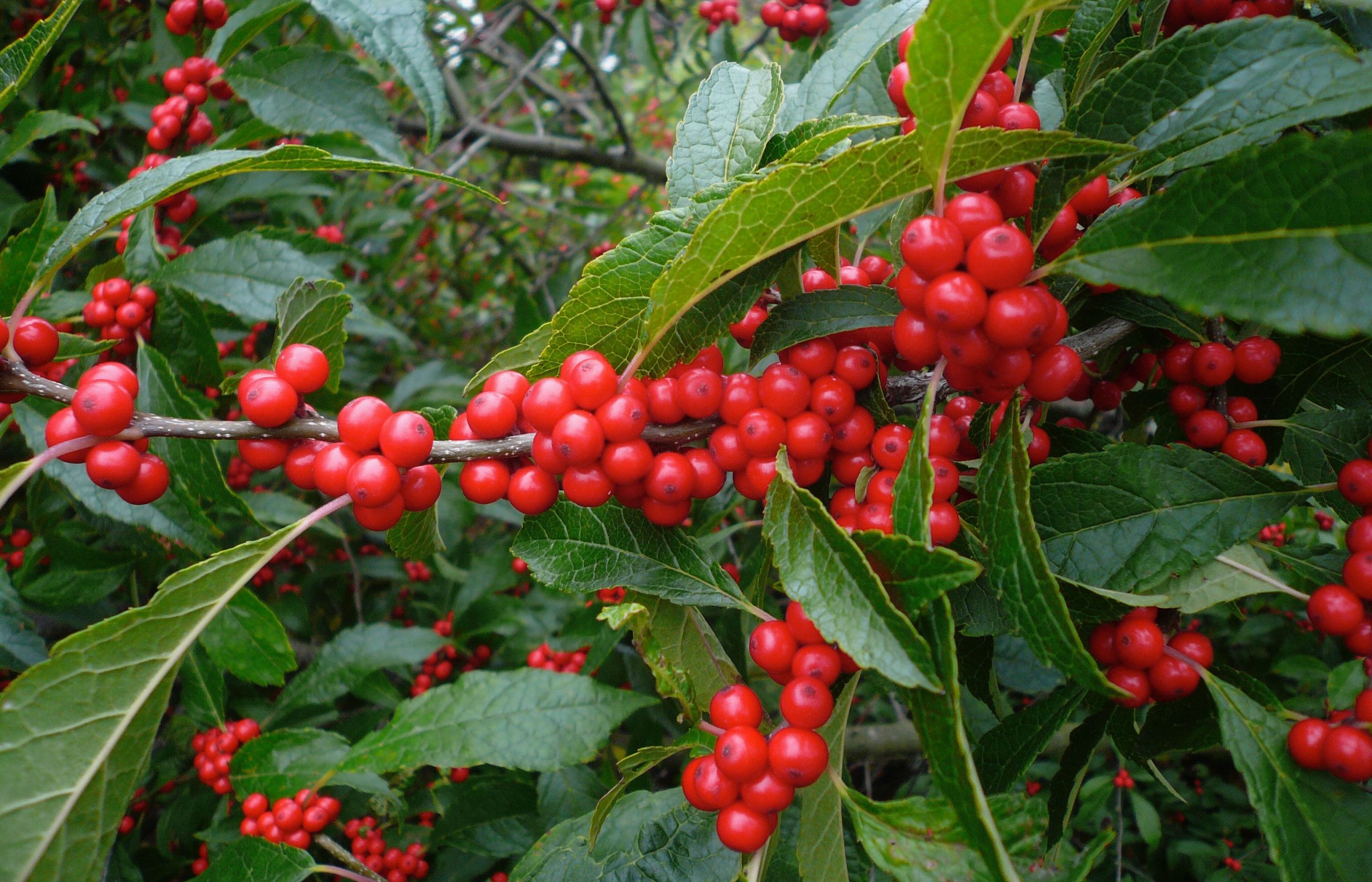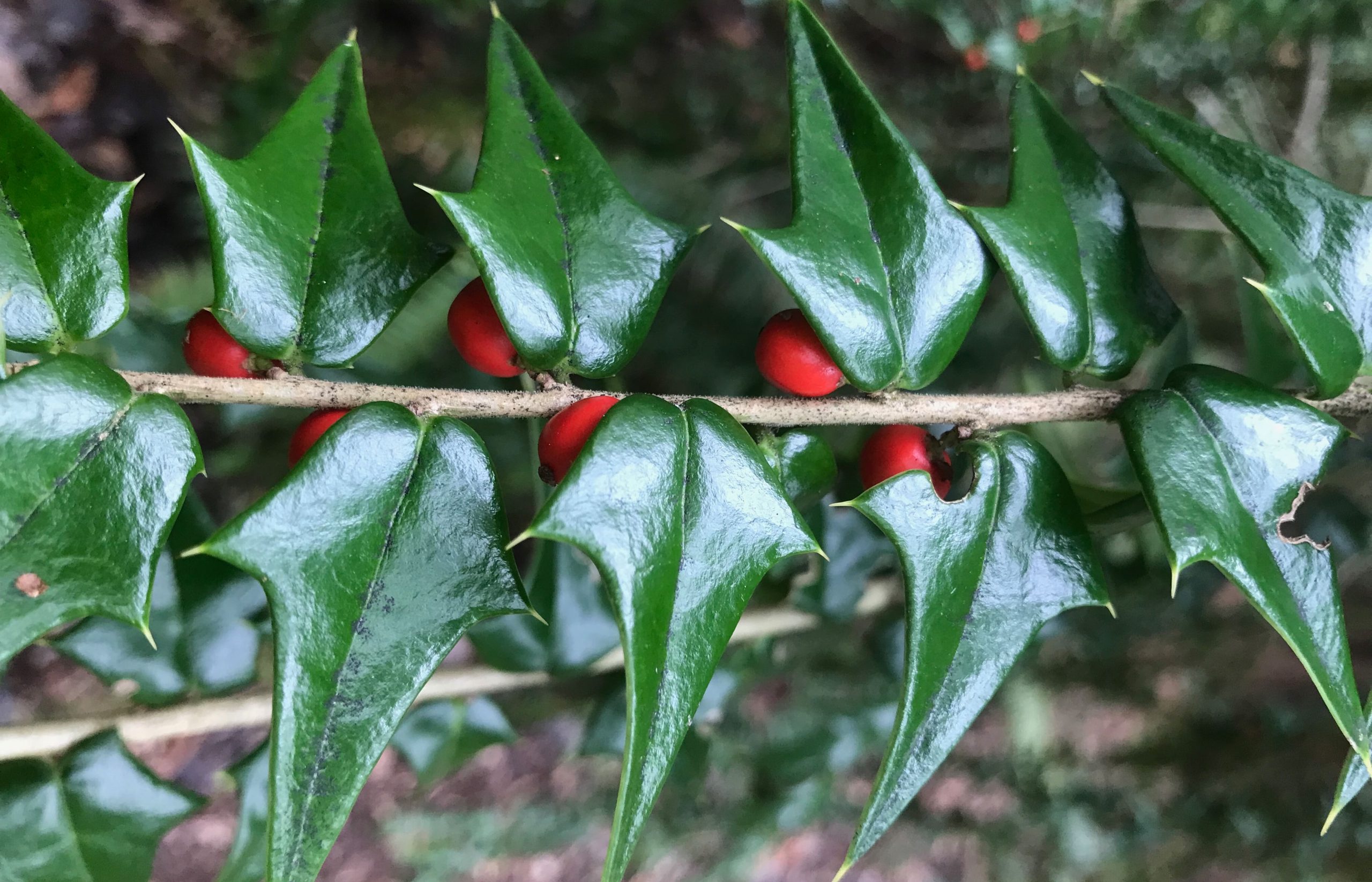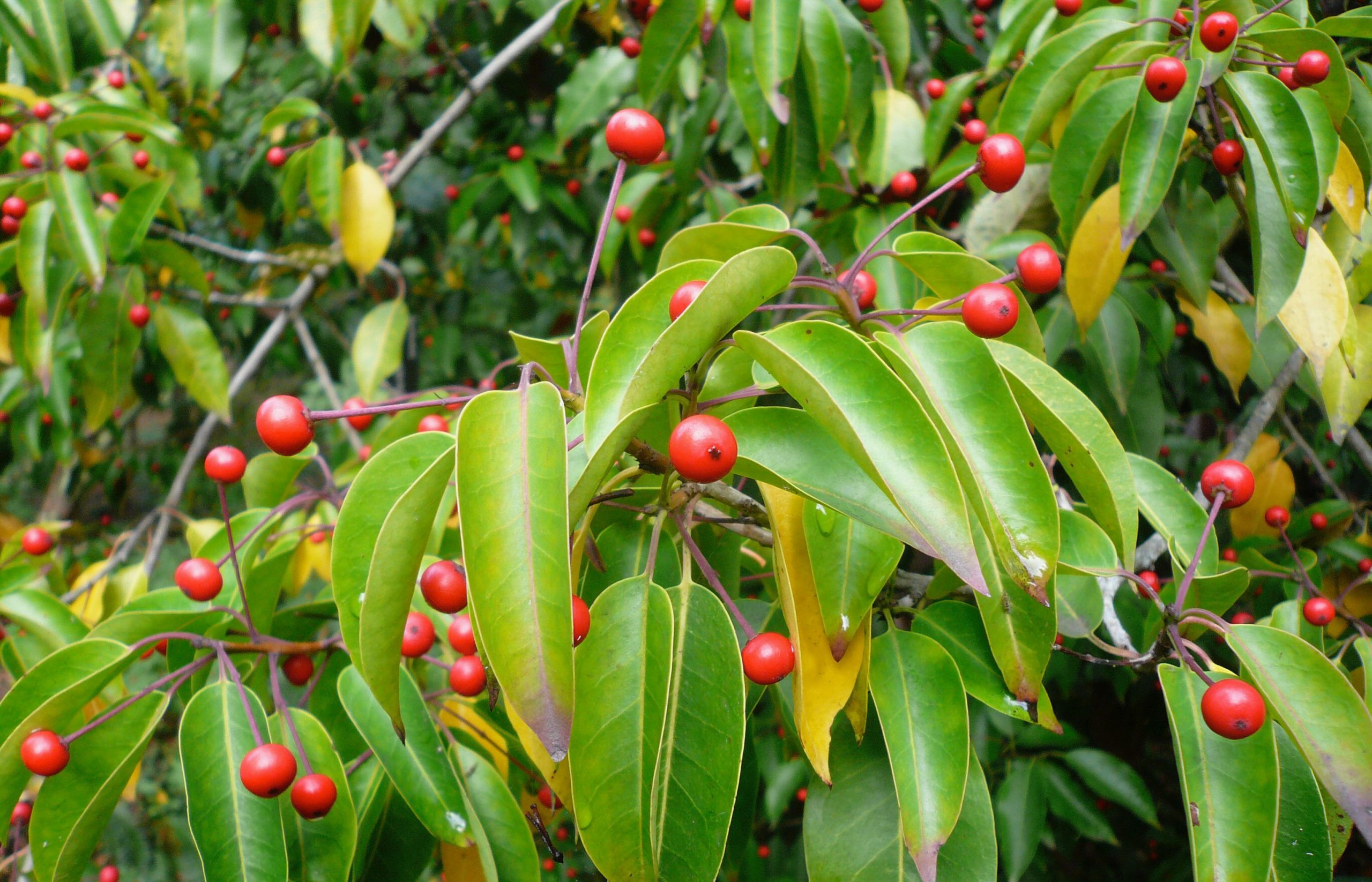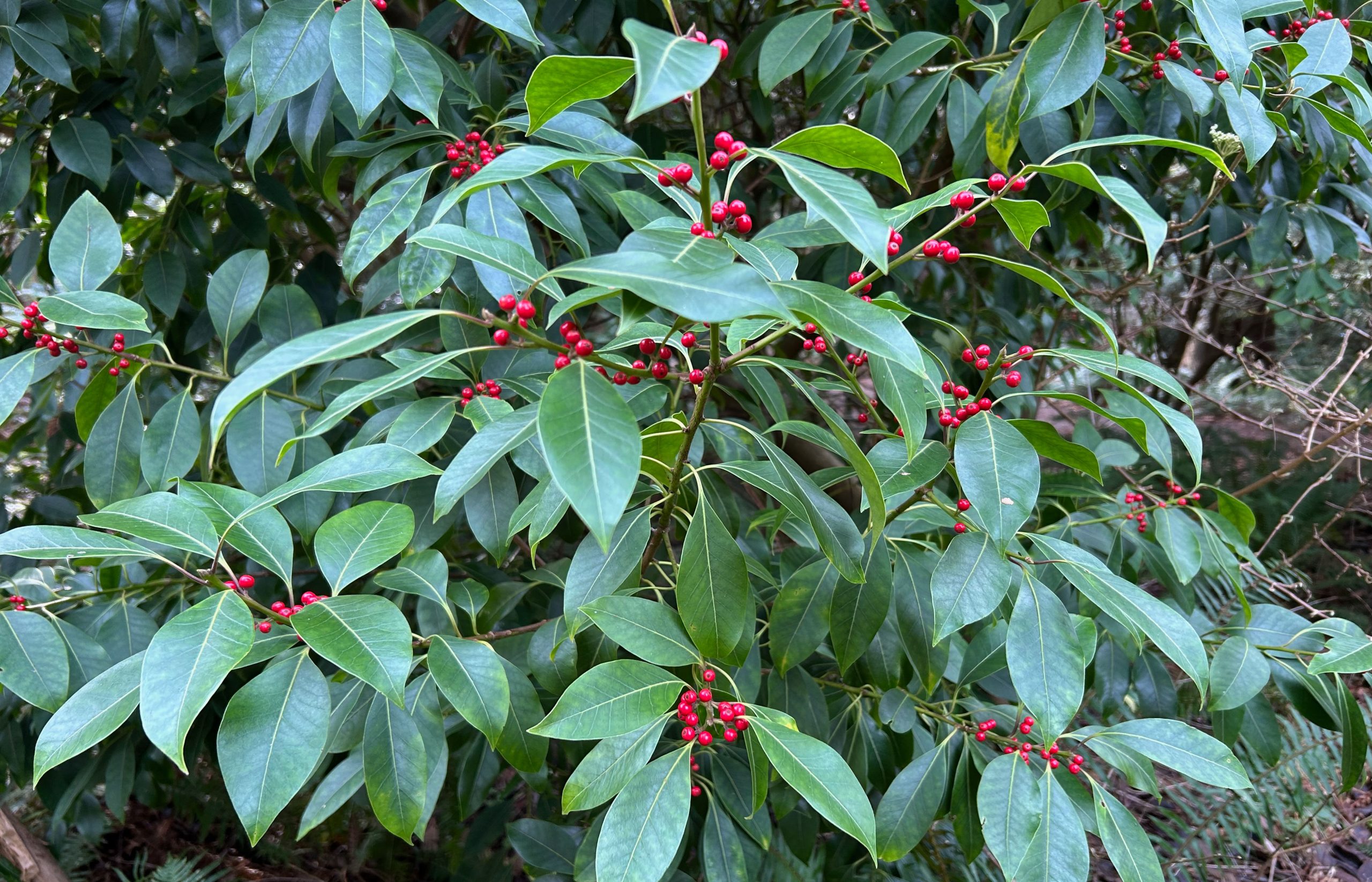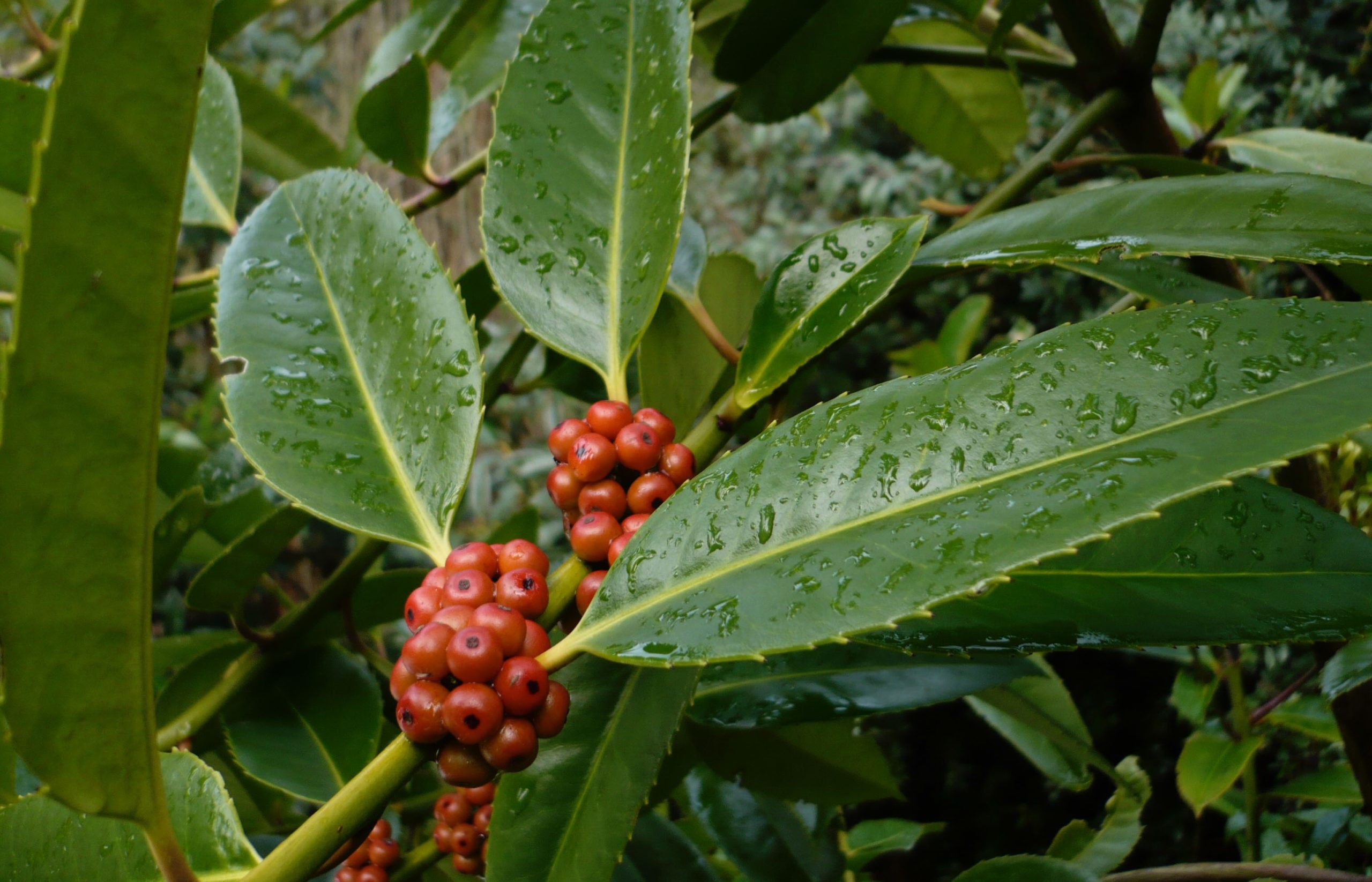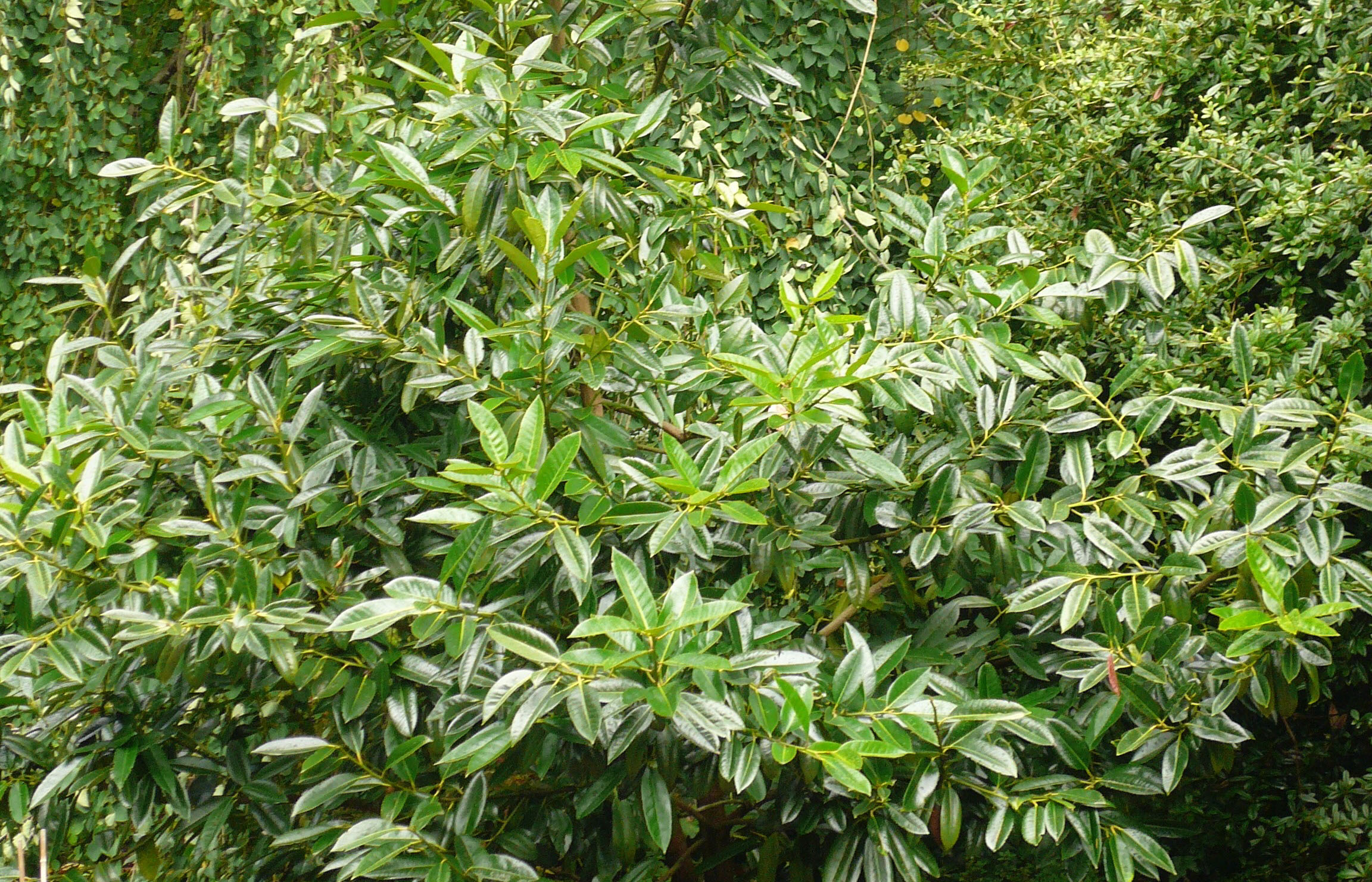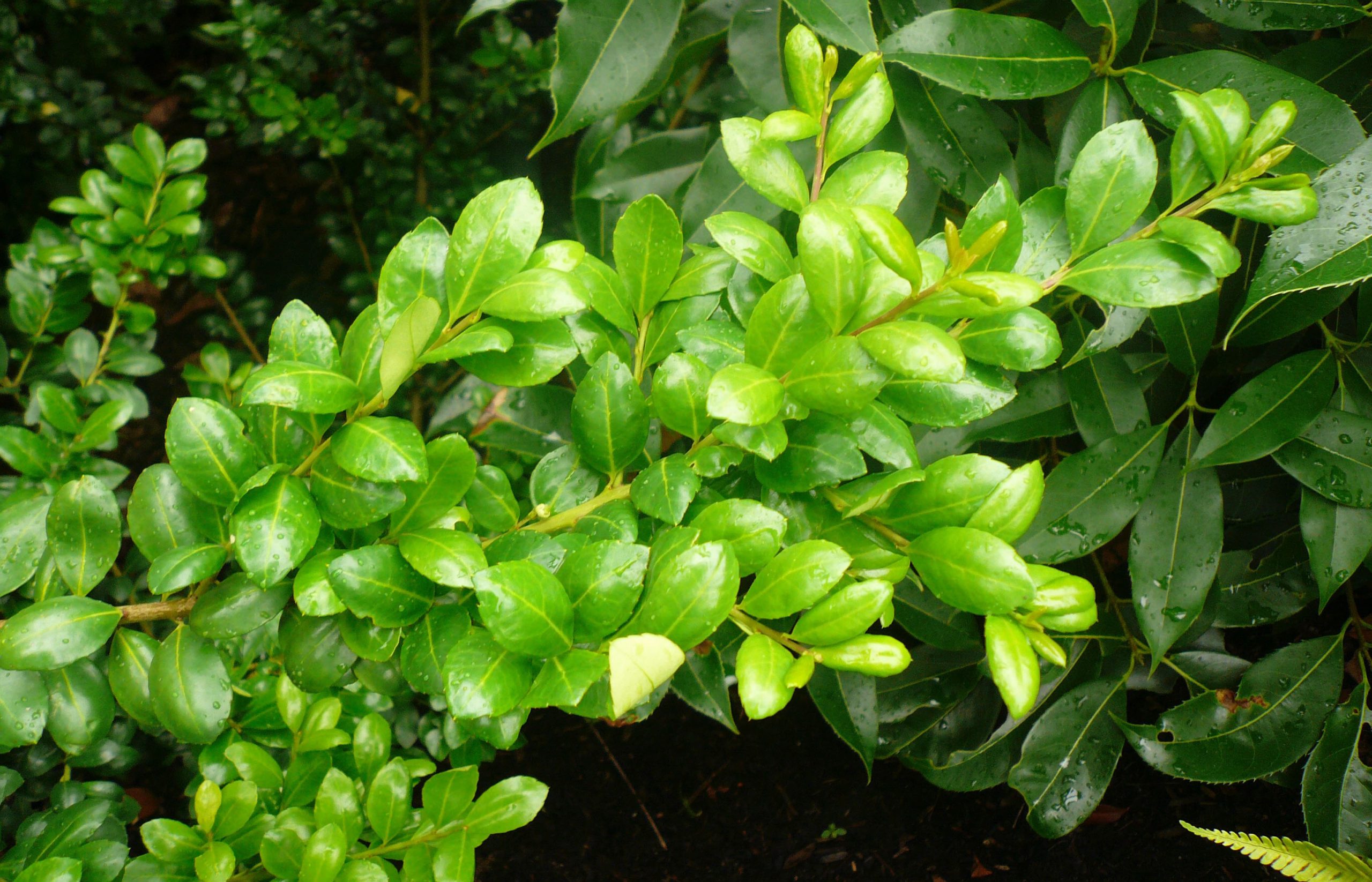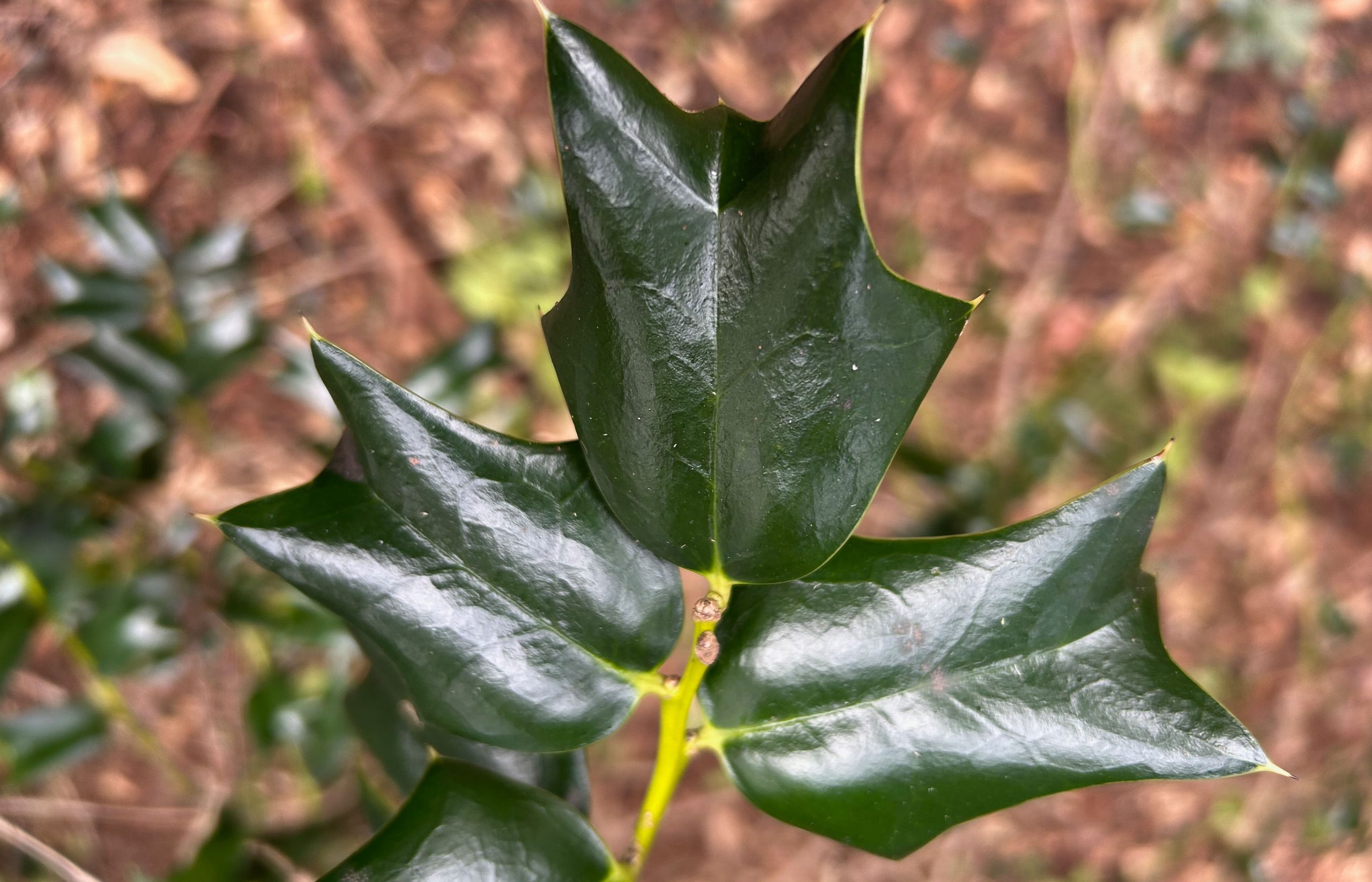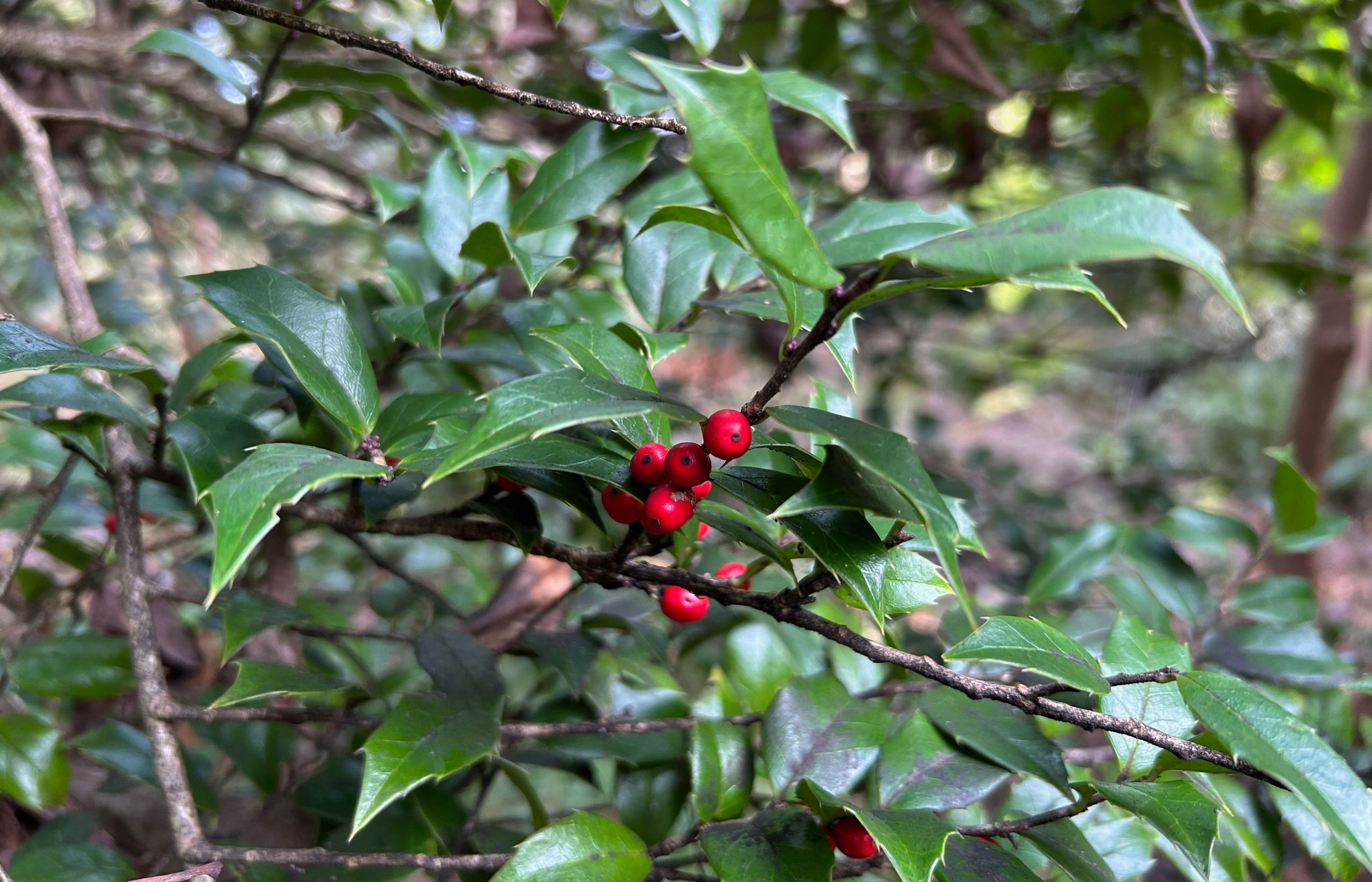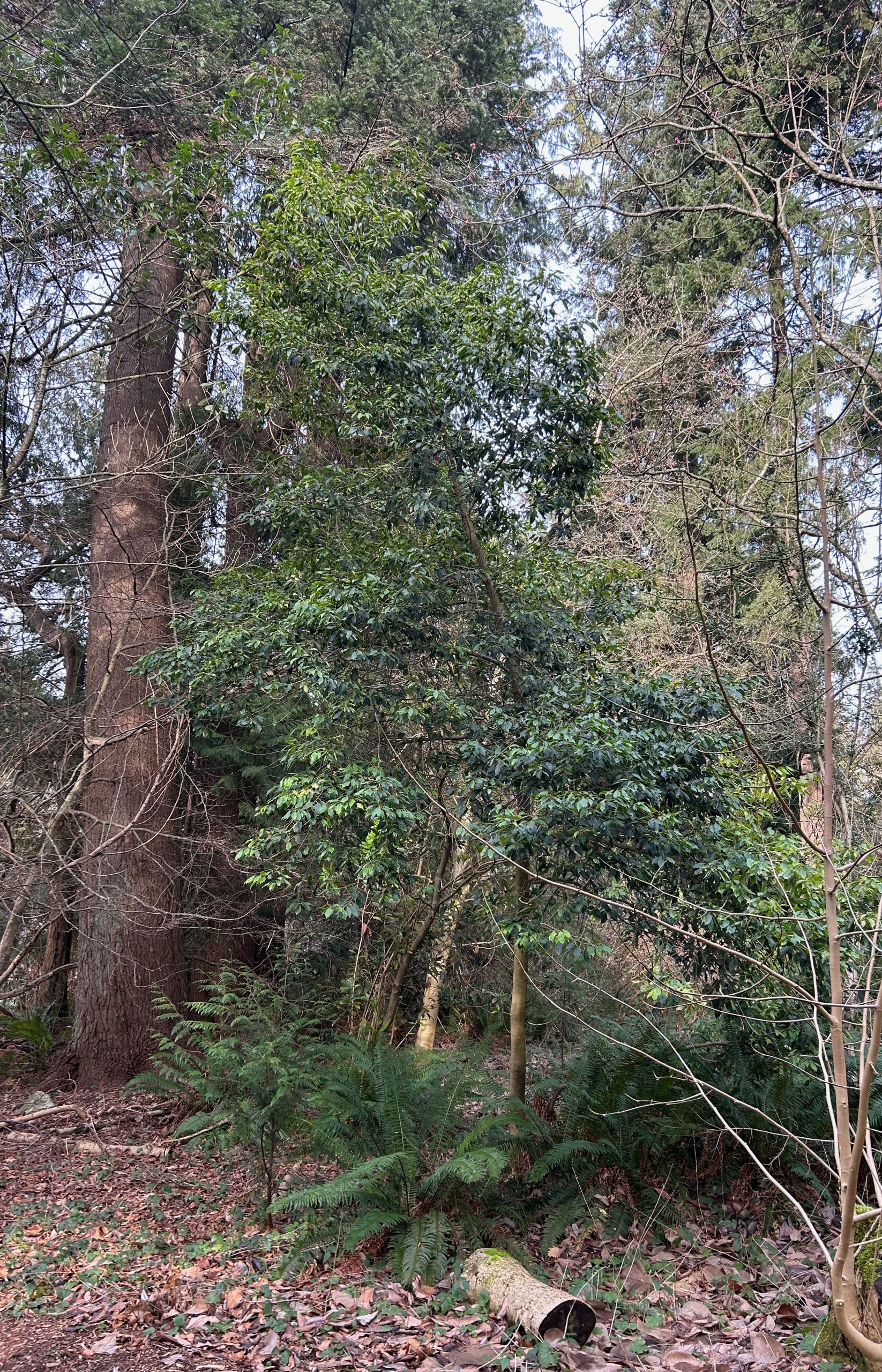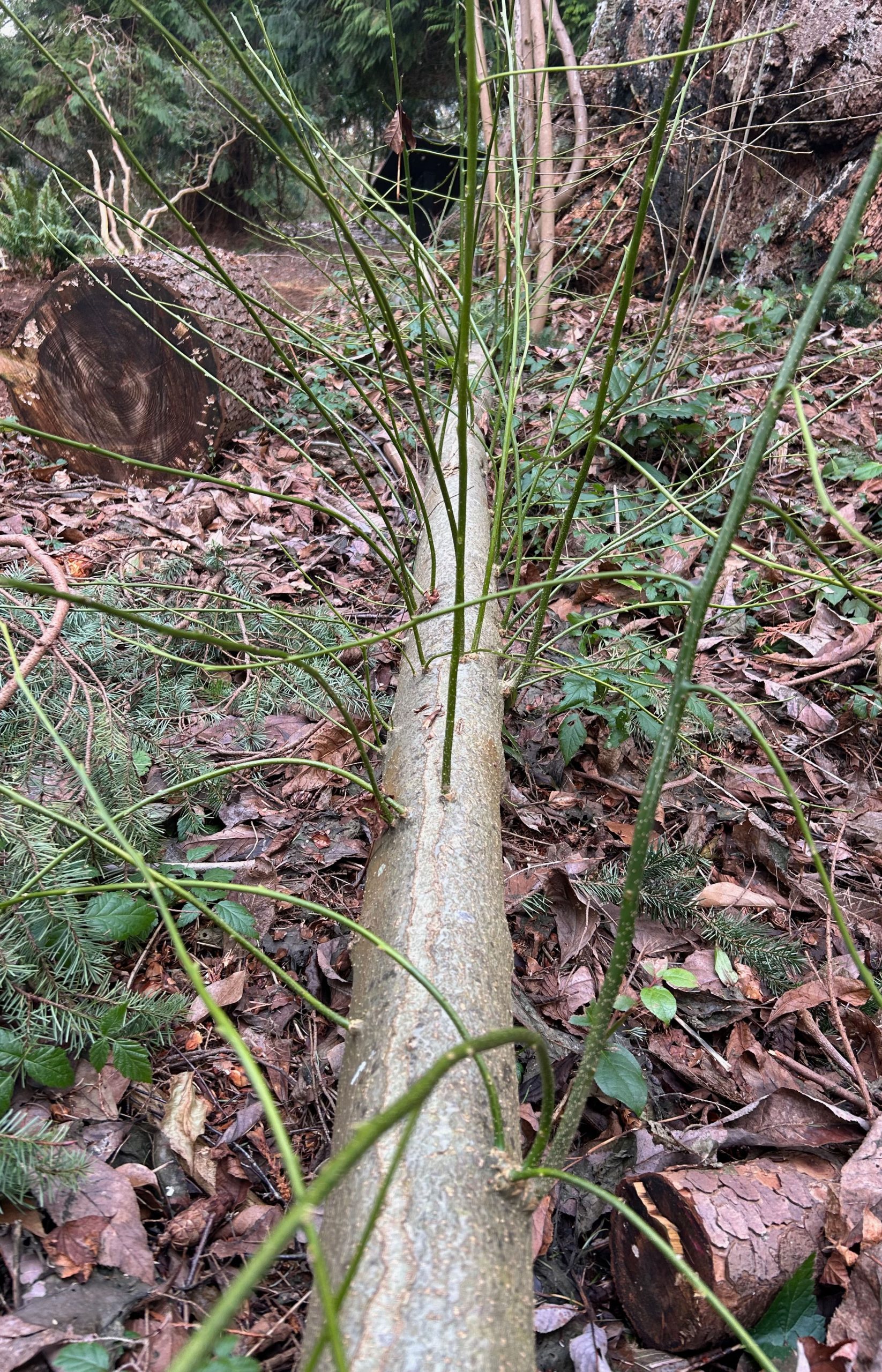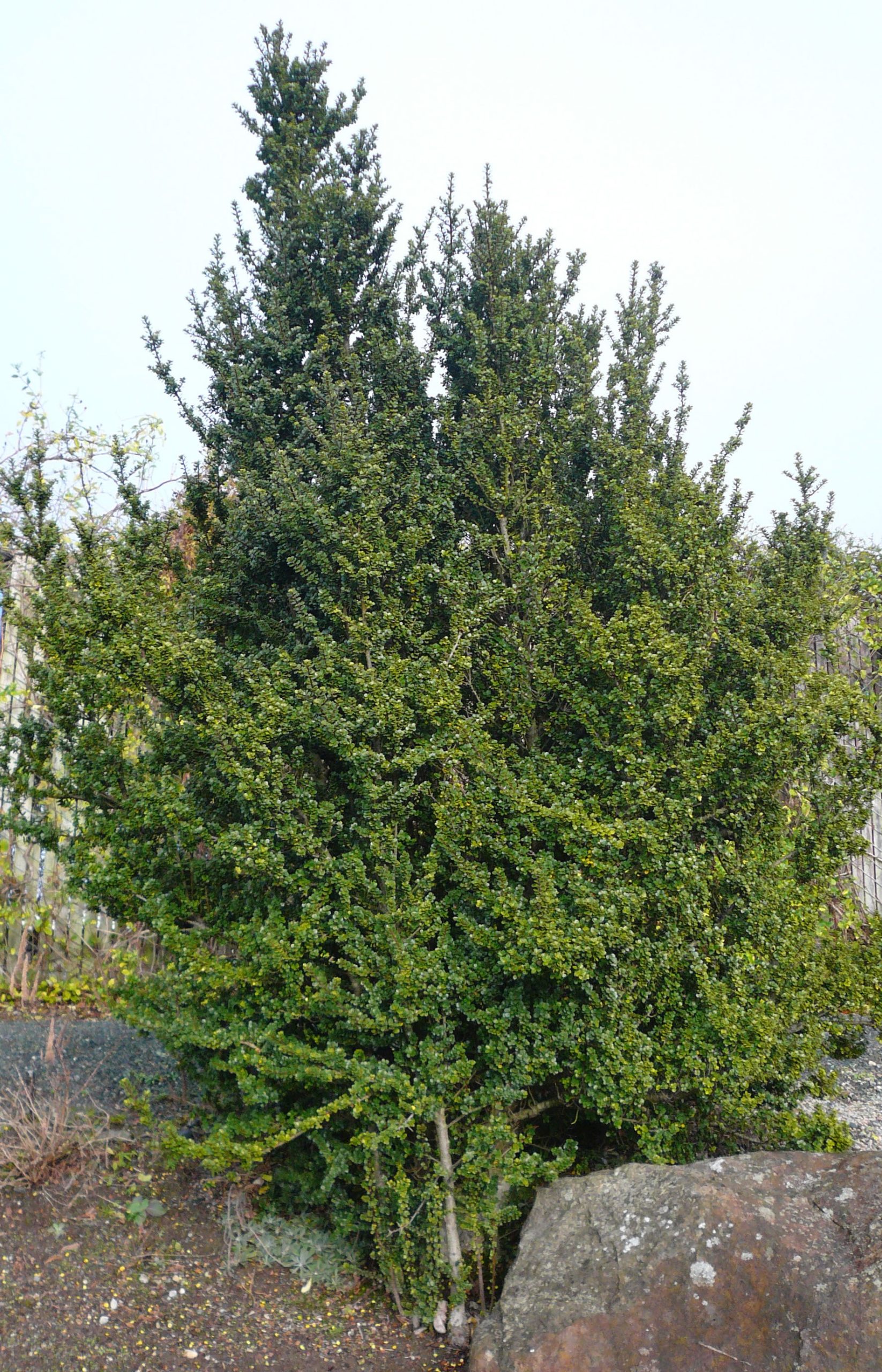
Ilex verticillata
Few garden plants are as tough as the hollies. The plant that comes to most minds (locally, at least) when holly is mentioned is undoubtedly Ilex aquifolium, the English holly, a species with countless ornamental cultivars popular for residential planting. One of the great things about English holly, and cold-hardy Ilex species in general, is that the berries (the fruits are technically drupes), remain firmly attached to their stalks well after they are fully ripe. That means they persist on the plants well into winter, and also have a good post-harvest lifetime—which is one of the reason branches are harvested for Yule decorations. English holly is now widely recognized as invasive and cannot be recommended. You can see it everywhere in Pacific Spirit Park, particularly along Northwest Marine Drive. Fortunately, none of the Ilex species cultivated in the Garden are known to be invasive here.
One of the most spectacular of these is a deciduous species known as sparkleberry or winterberry, Ilex verticillata, which is native across eastern North America. Its papery, unarmed leaves and unusual shrubby stature belie its true affinities with the holly clan. As the common name suggests, the berries, although small, are a spectacular glossy scarlet to vermillion. There are plantings of this species in the Carolinian Forest Garden, and as long as birds are well fed elsewhere, the berries hang on into mid-winter. Deciduousness is rare in hollies, but like nearly all Ilex species, sparkleberry is dioecious (male and female flowers are borne on separate plants), which means that only female plants bear fruit. A more tree-like deciduous species and a southern Chinese native is Ilex macrocarpa, large-fruited holly, which produces berries that are a whopping 10 to 14 mm in diameter—not quite cherry-sized, but about double the size of the English holly berry. Alas, we have only a single tree, which means we’ll need a mate if we want to see fruits (hollies require cross pollination to form berries). Without fruit, the species would be hard to pick out, but ours was knocked over by a falling branch and is now resprouting madly from the now horizontal trunk. Look for a forest of bright green sprouts in the David C. Lam Asian Garden on Delavay Trail just below the eagle tree.
At a somewhat smaller scale, Ilex crenata (Japanese holly), is an evergreen shrubby species native across eastern Asia. Plants have rounded, toothed and often convex leaves and mostly hidden, small black berries. In the wider local landscape, the species is primarily represented by the ubiquitous Ilex crenata ‘Convexa’. That selection is not present in the Botanical Garden (there are plenty of examples elsewhere), but the species has spawned several other interesting cultivars—nearly all of them excellent garden plants. Among the most distinctive is Ilex crenata ‘Mariesii’, a female cultivar with stiffly upright stems, small, glossy dark green, nearly circular leaves and masses of tiny, lustrous black berries. Our largest example sits high on the hill in the Asian Section of the E. H. Lohbrunner Alpine Garden. Another cultivar, Ilex crenata ‘Hetzii’ is sometimes described as a larger, looser version of I. crenata ‘Convexa’. There are multiple plants in the front entrance along the north side of the boardwalk.
The long-stalk holly, Ilex pedunculosa, is an unusual holly, native to both China and Japan. Like the remaining Ilex species mentioned here, long-stalk holly is found in the Asian Garden (there is a large plant of this species by the refurbished bridge on Forrest Trail). Together with the neat, smooth-edged evergreen leaves are bright red berries on female plants. As well, the flowers and fruits are borne on extraordinarily long peduncles (pedunculosa means “with conspicuous peduncles”). Another Asian species with beautiful evergreen foliage is the litsea-leaf holly, Ilex litseifolia. A rare, arborescent holly from southeastern and south-central China, the species has small orange-red berries. Well-spaced on purplish stems, the leathery, barely toothed glossy leaves are burnished bronze in winter. There is a female plant on Sherriff Trail and a larger female plant in Wharton Glade west of Purdom Trail (a smaller male nearby provides the pollen). In a similar vein, most people would be hard-pressed to identify Ilex suaveolens as a holly, but this attractive evergreen is a tree-like version of Ilex pedunculosa—minus the extraordinary peduncles. Our only specimen is a male, so, fruitless. The June-borne flowers are fragrant (suaveolens means “sweet-smelling”). See if you can find it on Flanagan Trail west of Kingdon Ward Way.
While it may be a surprise to those only familiar with English hollies, the vast majority of Ilex species lack spiny edged leaves. Still, Asia does have its share that are well-armed, and Perny’s holly, Ilex pernyi, from southern China, is a particularly fine example. The small leaves are glossy, dark green, triangular-pointed and wickedly spine-margined, and arguably its finest feature, but female plants also produce attractive scarlet berries. There are numerous specimens in the Asian Garden, but those on Straley and Hemsley Trails are the most easily accessed. Ilex cornuta, the horned holly—so named because the two uppermost lateral spines on the leaf are likened to a pair of horns, is native to southern and central China and Korea. Look for it on both sides of Upper Asian Way at Henry Trail. One of the most “holly-like” Asian hollies is Ilex bioritsensis, a Chinese and Taiwanese species noted for its close-set spiny leaves that are borne in two opposing ranks along the branches. Berries are bright scarlet, but the specimen between Ludlow and Tschonoski Trails below Lower Asian Way—our largest—is a male. You have to look hard to see the fruit-bearing specimen further west on Lower Asian Way near Farrer Trail.
The largest leafed of our hollies is Ilex latifolia (lustre-leaf holly), and the leaves are really huge, and glossy (latifolia means broad leaves). The berries are small and tightly clustered, and range in colour from dull orange to blood red. Multiple plants are located near the Moon Gate. The large specimens on Upper Asian Way east of the Moon Gate, on Maries Trail and on Siebold Trail near Cox Trail are typical, and the stems of the specimen on Decaisne Trail should be enwrapped in berries all winter, but fruits were not forthcoming (last January’s winter blast probably killed the flower buds). In comparison to Ilex pedunculosa, the fruits of this species are borne on laughably short peduncles—laughable except that the majority of hollies share the short-peduncle trait, like this, and the long-stalk holly is the actual outlier. In total, there are some 30 different Ilex species in the garden. This might seem like a good number, but the genus boasts 500 to 600 species worldwide and there are more than 200 alone in China. I’d say were barely getting started in displaying their incredible diversity.
- Ilex verticillata
- Ilex pernyi
- Ilex pedunculosa
- Ilex litseifolia
- Ilex latifolia zhejiangensis
- Ilex latifolia zhejiangensis
- Ilex crenata ‘Hetzii’
- Ilex cornuta ‘KE’
- Ilex bioritsensis
- Ilex suaveolens
- Ilex macrocarpa
- Ilex crenata ‘Mariesii’
Submitted by: Douglas Justice, Associate Director, Horticulture and Collections at UBC Botanical Garden

